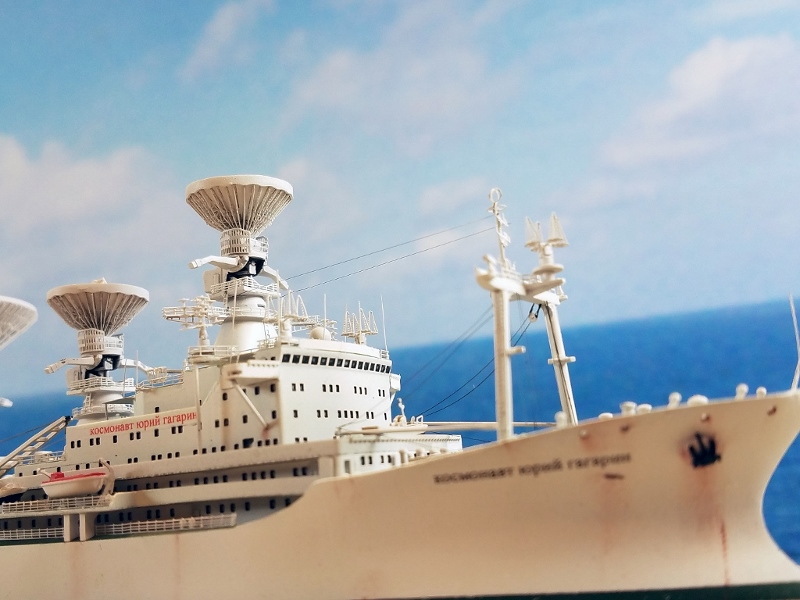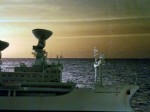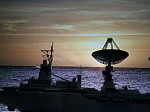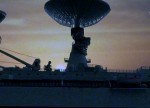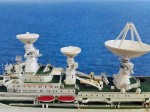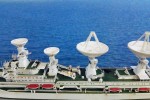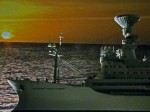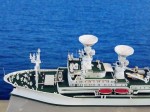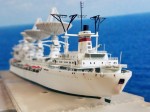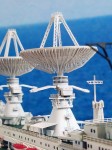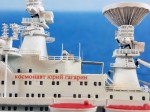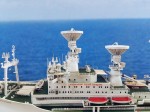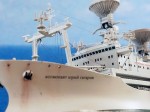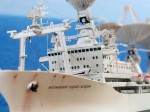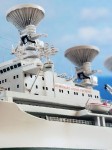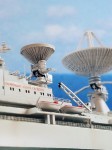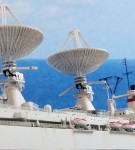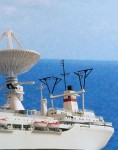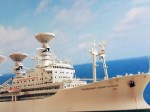You are viewing the archived version of the site.
Go to modelshipwrights.com for the current dynamic site!
Go to modelshipwrights.com for the current dynamic site!
1⁄700Kosmonavt Yuri Gagarin
2
Comments
History
Kosmonavt Yuriy Gagarin (Russian: «Космона́вт Ю́рий Гага́рин») was a Soviet space control-monitoring ship or Vigilship (Veladora) that was devoted to detecting and receiving satellite communications. Named after cosmonaut Yuri Gagarin, the ship was completed in December 1971 to support the Soviet space program. The ship also conducted upper atmosphere and outer space research. It had very distinguishable looks due to two extremely large and two smaller parabolic "dish" antennas placed on top of the hull. In 1986, the Kosmonavt Yuriy Gagarin was the world's largest communications ship and was the flagship of a fleet of communications ships.[1] These ships greatly extended the tracking range when the orbits of cosmonauts and unmanned missions were not over the USSR. In 1975, the ship was a part of the Soviet-American Apollo-Soyuz joint test program. The communications ships belonged to the Soviet Academy of Sciences. The maritime part fell under the responsibility of the Baltic- and Black sea shipping. The ships had home ports in Ukraine (Kosmonavt Yuriy Gagarin and the other surveillance ship Akademik Sergei Korolev), so after the fall of the Soviet Union they were transferred to Ukraine – ending their role in spaceflight. The ship was sold for scrap shortly after the break-up of the Soviet Union along with the Akademik Sergei Korolev.Kosmonavt Yuriy Gagarin
The latest unique commission from my favorite patron is the Russian radar tracking ship Yuri Gagarin from ComBrig. The kit itself is very well done and includes a full set of photo etch and even a clear plastic display case.Construction of the ship with this kit went well, and the resin parts provided were very well finished with little flashing etc. The photo etchwas VOLUMINOUS and of a good quality and scale for the ship. My only "complaint" if you could call it that was that the kit designers expected the builder to do things and utilize the photo etch in ways that truly test (i.e. overestimate) the abilities of even the most hardened PE veteran.
The instructions, 8-10 pages worth, were clear and well done pictures, however, they suffered from one large flaw. There are NO PART NUMBERS ANYWHERE on the instructions or on the frets. This makes for a tricky build from time to time, but doesn't stand in the way of success.
Another interesting challenge is just the color of the ship. White is actually a tough color to work with, especially when contrasted with a dark deck color such as the green.
The kit's only significant flaw is the decals. Mine simply broke apart and floated away when put in water leaving me to try out making my own decals for the first time. They came out reasonably well, but I'm sure there is more to learn in that area for me.
Comments
David,
Nice Job on a most unusual and distinctive ship. All that photoetch would have driven me mad!
FEB 16, 2018 - 07:11 PM
Wow, phantastic work on this ship David!
The level of detail is just stunning.
Cheers
Walter
FEB 17, 2018 - 02:58 AM
Copyright ©2021 by David J. Salvin. _OPINIONS Model Shipwrights, KitMaker Network, or Silver Star Enterrpises. Images also by copyright holder unless otherwise noted. Opinions expressed are those of the author(s) and not necessarily those of Model Shipwrights. All rights reserved. Originally published on: 2018-02-16 17:04:11. Unique Reads: 7916




